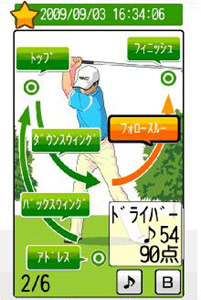Qualcomm Faces Fair-Trade Issue in Japan
 Japan’s anti-trust regulator has ordered Qualcomm to remove what it claims are unfair clauses in its licensing agreements with domestic handset makers.
Japan’s anti-trust regulator has ordered Qualcomm to remove what it claims are unfair clauses in its licensing agreements with domestic handset makers.
 Japan’s anti-trust regulator has ordered Qualcomm to remove what it claims are unfair clauses in its licensing agreements with domestic handset makers.
Japan’s anti-trust regulator has ordered Qualcomm to remove what it claims are unfair clauses in its licensing agreements with domestic handset makers.
A working group of industry players joins to establish standards for the future of mobile high definition televison broadcasting.
 Fujitsu announced that they have developed “3D motion Sen Synge engine” technology that three-dimensionally measured the movement of the body of the person who had it by using the sensor built into a mobile phone. The application program “ETGA swing lesson” as a featured example is able to check the golf swing was developed to demonstrate the potential applications of this service.
Fujitsu announced that they have developed “3D motion Sen Synge engine” technology that three-dimensionally measured the movement of the body of the person who had it by using the sensor built into a mobile phone. The application program “ETGA swing lesson” as a featured example is able to check the golf swing was developed to demonstrate the potential applications of this service.
“ETGA swing lesson” analyzes the orbit of the swing form from the body movement data, and diagnoses the swing. It only has to install the cellular phone equipped with the acceleration sensor and the giro sensor in the small of the back, and it is possible to compare it with a past best swing of the self besides the evaluation and advice are received. It exhibits at “CEATEC JAPAN 2009” held in Makuhari Messe on October 6th.
DoCoMo announced it has developed a mobile phone prototype made with the surplus wood of trees culled during thinning operations to maintain healthy forests. The mock-up was created in collaboration with Sharp, Olympus and th ‘More Trees’ reforestation project founded by musician Ryuichi Sakamoto and others. This would represent a natural addition to previous corn based offerings – circa 2005 – via NEC and Fujitsu.
 The always-on folks at IT Media review new ad campaign, with app suggestions for the iPhone, running here this week by SoftBank Mobile.
The always-on folks at IT Media review new ad campaign, with app suggestions for the iPhone, running here this week by SoftBank Mobile.
 Terminal POS data in Japan, according to GFK, for week of Sept. 7th indicates the iPhone 3Gs 32GB model jumped from 3rd to 1st position.
Terminal POS data in Japan, according to GFK, for week of Sept. 7th indicates the iPhone 3Gs 32GB model jumped from 3rd to 1st position.